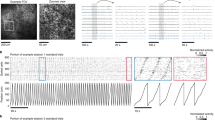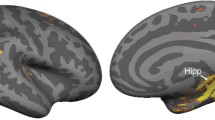Abstract.
The goal of this paper is to propose a model of the hippocampal system that reconciles the presence of neurons that look like “place cells” with the implication of the hippocampus (Hs) in other cognitive tasks (e.g., complex conditioning acquisition and memory tasks). In the proposed model, “place cells” or “view cells” are learned in the perirhinal and entorhinal cortex. The role of the Hs is not fundamentally dedicated to navigation or map building, the Hs is used to learn, store, and predict transitions between multimodal states. This transition prediction mechanism could be important for novelty detection but, above all, it is crucial to merge planning and sensory–motor functions in a single and coherent system. A neural architecture embedding this model has been successfully tested on an autonomous robot, during navigation and planning in an open environment.
Similar content being viewed by others
Explore related subjects
Discover the latest articles and news from researchers in related subjects, suggested using machine learning.Author information
Authors and Affiliations
Additional information
Received: 28 June 1999 / Accepted in revised form: 26 April 2001
Rights and permissions
About this article
Cite this article
Gaussier, P., Revel, A., Banquet, J. et al. From view cells and place cells to cognitive map learning: processing stages of the hippocampal system. Biol Cybern 86, 15–28 (2002). https://doi.org/10.1007/s004220100269
Issue Date:
DOI: https://doi.org/10.1007/s004220100269




